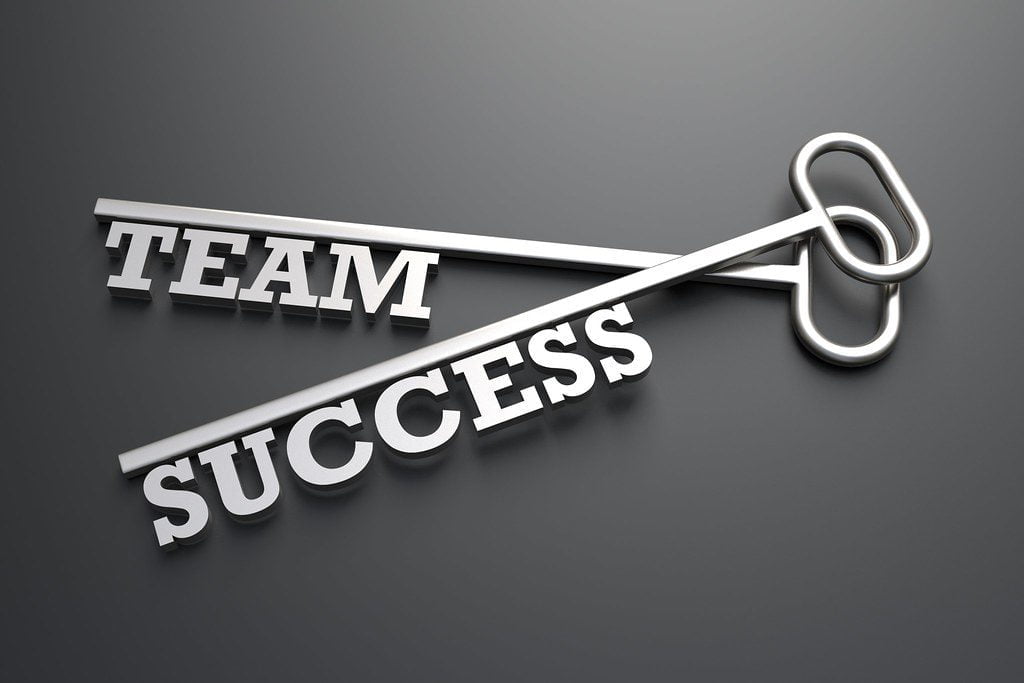Are you tired of a lackluster, disjointed team that couldn’t find cohesion if it smacked them in the face? Well, fear not, because today we’re diving headfirst into the wonderful world of team cohesion. Building a successful team is like baking the perfect cake. You need the right ingredients, a pinch of love, and a whole lot of coordination.
In this blog post, we’ll uncover 12 incredibly effective strategies that will take your team from simply existing to thriving in unison. So grab a cup of coffee (or tea, if that’s your jam) and get ready to boost your team’s success to new heights! Let’s dive in, shall we?
Jump To Section
Why is Team Cohesion Important?
Team cohesion is of high importance to any organization, large or small. Ineffective teamwork can be detrimental to the success of your company. Effective teamwork can improve productivity and the quality of work performed by employees. A cohesive team will have members who are committed to their responsibilities, respect each other’s opinions, share common goals and values, trust one another as well as their leader(s), feel supported by others on the team, and enjoy working together as a unit. In this article, you will learn how to build team cohesion.
Signs of a Strong, Cohesive Team

A cohesive team:
- Makes decisions collectively rather than having everyone come up with ideas on their own before presenting them to management for review
- Works well together to complete projects in less time than it would take if people worked individually. This may mean fewer mistakes being made as well!
- Team members trust each other.
- Members have each other’s backs.
- Team members feel comfortable sharing information, even if it isn’t a part of their job description.
- Members share a sense of purpose and belonging with their teammates. This makes them feel like being on the team is an important part of their identity. And they want to do well as individual team members so that the whole group can succeed and be happy together.
These are all signs that you have built a cohesive team!
Respect is key In Building Team Cohesion
The most important element to building a happy, healthy team is respect.
Allowing your team members to showcase their individuality and utilize their strengths is vital in creating a positive environment. Without this, you will not be able to work well together. Use your time together wisely by listening to each other’s ideas and suggestions. If you have an idea that will help the project or benefit the team, do not be afraid to share it! Someone else may have had the same idea. This means both of you could benefit from sharing it with everyone else on the team.
Always remember: Respect is key!
Be open to new ideas and approaches

If you want your team to work well together, it’s important to be open-minded. You can’t expect other people on your team to always do things the way you would. Or think about problems in the same way that you do.
Be willing to adapt and negotiate as well. If someone suggests a new idea, listen carefully before rejecting it outright just because it’s different than what you had in mind. If an employee suggests how something could be done more effectively or efficiently, consider it carefully and consider whether there might be some merit to his or her perspective that wasn’t immediately obvious at first glance. Your willingness to listen will encourage others on your team to also feel comfortable offering their ideas for improvement and this is where real progress begins!
Resolve Unhealthy Team Conflicts to build team cohesion
There are two types of conflict: constructive and destructive. Constructive conflicts are healthy for the team because they allow your team members to express their opinions and ideas openly. On the other hand, destructive conflicts cause issues in a team’s cohesiveness by causing negative relationships between people. Here are some examples of each type:
- Constructive: “Hey guys, I think we need to change up our timeline. I have another idea that will make sure we can hit our goals sooner than expected!”
- Destructive: “I don’t like how this is going right now; it should be my way instead! You guys always do things wrong!”
The best way to deal with unhealthy conflict on your team is by following these three steps. 1) Address the issue immediately. 2) Listen empathically (do not interrupt). 3) Work together towards a solution that everyone agrees upon. When used properly, these tactics can help resolve conflict quickly and efficiently. So that you can get back to work without letting it bother you or others in the future.
See Related: How to Resolve Conflict in the Workplace: 12 Effective Strategies
Provide a Mission and Vision For the Team

Before you can expect your team members to work together, you have to first define what it is that they are striving for. Each member of the team must understand why they are together. What their purpose is and how it will benefit them in the future. When these things are not made clear, people can become frustrated and unmotivated when their hard work doesn’t lead directly back to them.
The vision of your organization should only be as long as it needs to be for everyone involved in its creation process (and anyone who might read it later) to be able to understand exactly where you see your team heading in the future. What is important is having something tangible. That everyone can refer back to whenever tough decisions must be made during times when they feel lost or confused.
See Related: 7 Easy Steps To Create An Inspirational Vision Statement
People are motivated by a sense of achievement, recognition, feeling of importance, responsibility, and the prospect of advancement

Employees who feel like they are contributing to their company will be more loyal and productive than those who do not.
Employees want to be recognized for doing a good job. This can take the form of receiving praise from their manager or even getting an award from upper management.
People want to feel important in their jobs because it makes them feel good about themselves as well as boosts their self-esteem. The more responsibility you give someone at work, the harder they will try and the harder they will work. They know that if they do well at what they were given responsibility for then this could lead to more responsibility down the road.
People like knowing that something is waiting for them after working hard at something.
Remember the power of listening actively
Listening is not the same as hearing. Listening means actively paying attention to what someone else is saying and that requires energy, concentration, and empathy. It’s easy to get distracted in the middle of a conversation. But try your hardest to stay focused on what the speaker is saying. Instead of rehearsing your response in your head or thinking about something else entirely.
Listening doesn’t mean agreeing with everything you hear; being open-minded and willing to learn more about other people’s points of view are key components of effective listening skills.
As you practice listening with focus and empathy, you’ll find yourself becoming more empathetic as well which will help improve team cohesion over time.
See Related: How to Master Communication Skills! 15 Powerful Tips to Improve Starting Today
Empower your team members to give their best and make decisions

Empower your team members to give their best and make decisions.
- Give them the control they need to succeed. This means you have to trust them enough to let go of the reins, even when it feels like you’re letting a wild horse out into the pasture. You want your team members to be able to do what they need without having to check in with you every step of the way or ask for permission on each task. When they know they have autonomy over their work, they’ll feel more confident in what they’re doing and will be better equipped at getting things done on time and meeting deadlines.
- Let them decide how best to approach their goals or projects without having someone else tell them how it should be done (including yourself). If there’s a new project that needs attention, let your team member decide what’s going on with it. You might be surprised by how much more efficient things get once this happens!
- Give them control over deciding which tasks are important compared with which ones aren’t worth spending time on right now (especially if there aren’t any specific deadlines). This gives them room for creativity in approaching problems that may seem daunting otherwise, leading to better outcomes all around!
Give people choices in planning, goal setting, and problem-solving
- Decision Making – Giving people choices in decision-making is a good way to help them feel valued and involved.
- Goal Setting – Allowing your team members to set their own goals can be an effective way to build trust, boost morale, and raise productivity by investing the employees’ time and energy into their work.
- Problem-Solving – When you allow someone else on your team or company to come up with solutions for problems or challenges that are important to them, you are helping them feel empowered by giving them ownership over their work environment as well as increasing creativity within the organization because everyone has different experiences/perspectives which leads to different ideas/solutions!
- Planning – Give people choices in planning new projects together instead of just letting one person do it all because this will give everyone a chance at being included equally regardless if they have experience or not since there’s always something new being learned from whatever situation is encountered along each step of the way (whether it be good thing bad thing).
Celebrate success as a team to build team cohesion

Team members should celebrate their success, as well as the success of others.
Celebrate success in your team or group by recognizing the people who are doing a great job and/or making an impact on your business. Share their accomplishments with others so that they can be recognized on a larger scale.
When possible, encourage peer-to-peer recognition, where one person praises another person directly for something they’ve done well. This can help build trust and respect among teammates while also encouraging employees to take pride in their work and each other’s successes.
See Related: Celebrating Success in The Workplace: Tactics for Managers
Get together as a team outside of work hours
To build team cohesion, spending time together outside of work can go a long way. Here are some ideas:
- Go out to lunch or dinner with your teammates.
- Plan a happy hour or movie night.
- Take a day trip somewhere together.
- Go bowling or play mini-golf together.
These are just some of the ways you can get together as a team outside of work. Don’t be afraid to get creative. The biggest thing is to make sure these get-togethers are completely voluntary or they begin to feel like work.
Utilize Team-Building Activities
Team-building activities are designed to help your team become more cohesive. Team-building activities create an environment where people can get to know each other better, bond with one another, and learn new things about their teammates. The results of team-building exercises include improved morale, increased trust and communication, greater productivity, increased creativity, heightened energy levels, and enhanced problem-solving skills.
There are many different types of team-building exercises you can use to improve your team’s cohesiveness. Check out the link below for 10 amazing team-building games.
See Related: 10 Fun Team Building Activities Your Employees Will Love
People need to feel seen and heard for team cohesion, but it takes work on everyone’s part leaders especially
Perhaps the most important part of creating a cohesive team is for each member to feel that their work matters. That’s why it’s so important for leaders to make sure that each person on their team feels like they are contributing and being heard.
It isn’t easy, but it can be done! One way is to hold regular meetings where everyone gets together and discusses what they’re working on, how things are going, and what issues they’re facing. Giving people this platform allows them to share their ideas with others outside of their specific department or role in the company.
Another strategy involves setting aside some time every week you ask each person on your team about what they’ve been up to recently, both at work and in their personal lives, so you have an idea of where each individual is coming from when it comes time for discussion (and collaboration) around projects at hand.
Characteristics of a Cohesive Team
Clear Common Goals
One of the fundamental characteristics of a cohesive team is having clear common goals. When team members share a common vision and mission, they are more likely to work harmoniously towards achieving them. Clear objectives and expectations provide a sense of direction and help team members understand their roles and responsibilities.
Open Communication
In a cohesive team, open communication is the lifeblood that keeps things flowing smoothly. Team members should communicate frequently and honestly, sharing ideas, concerns, and feedback. Being an active listener and showing respect for other team members’ perspectives is essential for effective communication. By fostering an environment of open communication, a team can avoid misunderstandings and work together more efficiently.
Trust and Mutual Respect
Trust and mutual respect are the building blocks of a cohesive team. This is fostered when team members show reliability and transparency in their actions and decisions. When people trust each other, they feel secure and are more willing to collaborate and take risks. Additionally, mutual respect plays a vital role in creating a positive team dynamic. Valuing each team member’s contributions, ideas, and opinions fosters a sense of belonging and boosts morale within the team.
Complementary Skills and Diversity
A cohesive team is comprised of individuals with complementary skills and diverse backgrounds. Each team member brings unique strengths and expertise that contribute to the overall success of the team. By leveraging these diverse skill sets, a team can approach challenges from different angles and come up with innovative solutions. Cultural, ethnic, and gender diversity add richness to the team’s perspectives and can lead to more creative and well-rounded outcomes.
Support and Collaboration
Support and collaboration are essential characteristics of a cohesive team. Team members should be supportive of one another, offering assistance, guidance, and encouragement when needed. Celebrating individual and team accomplishments helps foster a positive and motivating environment. Collaboration, both in decision-making and problem-solving, allows the team to leverage the collective knowledge and experience of its members, leading to better outcomes.
Conflict Resolution
No team is immune to conflicts. However, in a cohesive team, conflicts are addressed openly and constructively. Instead of avoiding or escalating conflicts, team members should aim to resolve them in a timely and respectful manner. The focus should be on finding win-win solutions through compromise, understanding, and effective communication. By addressing conflicts head-on, a cohesive team can build stronger relationships and prevent any underlying tensions from escalating.
Celebrating Successes
Recognizing and celebrating team achievements is a crucial characteristic of a cohesive team. By acknowledging and publicly appreciating individual and collective successes, team morale and motivation receive a significant boost. Celebrating successes creates a sense of pride and fosters a positive work environment where team members feel valued and appreciated for their hard work and contributions.
Conclusion
Cohesiveness is the glue that holds a team together. It’s what makes it possible for the people on your team to trust and rely on each other when things get tough, and it’s what makes them feel comfortable enough to take risks in their work. Without cohesiveness, teams can’t succeed and without team success, everyone fails.
Did you enjoy this article on building team cohesion? Don’t forget to share and subscribe below.


